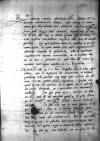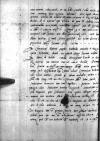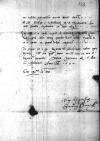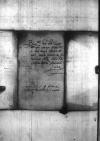Sacra Sigismund I Jagiellon (Zygmunt I) (*1467 – †1548), King of Poland and Grand Duke of Lithuania (1506-1548); Duke of Głogów (Glogau) (1499-1506), Duke of Opava (1501-1506), Governor of Silesia (1504-1506); son of King Kazimierz IV Jagiellon and Elisabeth of Austria⌊maiestas regiaSigismund I Jagiellon (Zygmunt I) (*1467 – †1548), King of Poland and Grand Duke of Lithuania (1506-1548); Duke of Głogów (Glogau) (1499-1506), Duke of Opava (1501-1506), Governor of Silesia (1504-1506); son of King Kazimierz IV Jagiellon and Elisabeth of Austria⌋, dominus clementissimus, imposuit mihi hoc negotii, ut suae maiestatis litteras in aulam Charles V of Habsburg (*1500 – †1558), ruler of the Burgundian territories (1506-1555), King of Spain as Charles I (1516-1556), King of Naples and Sicily, King of the Romans (1519-1530), Holy Roman Emperor of the German Nation (elected 1519, crowned 1530, abdicated 1556); son of Philip I the Handsome and Joanna the Mad of Castile⌊caesareae maiestatisCharles V of Habsburg (*1500 – †1558), ruler of the Burgundian territories (1506-1555), King of Spain as Charles I (1516-1556), King of Naples and Sicily, King of the Romans (1519-1530), Holy Roman Emperor of the German Nation (elected 1519, crowned 1530, abdicated 1556); son of Philip I the Handsome and Joanna the Mad of Castile⌋ ad manus Dominationis Vestrae Reverendissimae ocissime transmitterem inque ea re nulli operae et sumptui parcerem. Ego, quod debitum meum est, quantum in me fuit, curavi sedulo, ut quam maxime fieri possit, compendiosis et celerrimis itineribus eo perferrentur, nullis id quantumvis sumptuosioribus impensis remorantibus, ita ut confidam illas sat cito Reverendissimae Dominationi Vestrae perlatum iri, quas Sigismund I Jagiellon (Zygmunt I) (*1467 – †1548), King of Poland and Grand Duke of Lithuania (1506-1548); Duke of Głogów (Glogau) (1499-1506), Duke of Opava (1501-1506), Governor of Silesia (1504-1506); son of King Kazimierz IV Jagiellon and Elisabeth of Austria⌊illius maiestatiSigismund I Jagiellon (Zygmunt I) (*1467 – †1548), King of Poland and Grand Duke of Lithuania (1506-1548); Duke of Głogów (Glogau) (1499-1506), Duke of Opava (1501-1506), Governor of Silesia (1504-1506); son of King Kazimierz IV Jagiellon and Elisabeth of Austria⌋ reddere ac responsum haud segnius remittere Reverendissima Dominatio Vestra dignabitur.
Redditae sunt mihi Reverendissimae Dominationis Vestrae litterae Brussels (Bruxellae), city in the Low Countries, Duchy of Brabant, since the regency of Mary of Hungary the capital of the Habsburg Netherlands, today the capital of Belgium⌊BruxellisBrussels (Bruxellae), city in the Low Countries, Duchy of Brabant, since the regency of Mary of Hungary the capital of the Habsburg Netherlands, today the capital of Belgium⌋ missae de data a die(?) 2 Octobris, quae ob singularem eius humanitatem, ut debebant, gratissimae mihi fuerunt eoque magis, quod scribendi hoc officium Dominationi Vestrae Reverendissimae gratum fuisse cognoverim. Equidem dabo operam, ut iam non scribendo, sed, si quando haec se mihi offerat occasio, obsequendo, me si quem alium eius observantissimum intelligat.
Iam quid prius Reverendissimae Dominationi Vestrae scriberem, non habeo, nisi hoc, quod illi omnino antiquissimum gratissimumque esse puto. Sigismund I Jagiellon (Zygmunt I) (*1467 – †1548), King of Poland and Grand Duke of Lithuania (1506-1548); Duke of Głogów (Glogau) (1499-1506), Duke of Opava (1501-1506), Governor of Silesia (1504-1506); son of King Kazimierz IV Jagiellon and Elisabeth of Austria
Bona Sforza (*1494 – †1557), Queen of Poland and Grand Duchess of Lithuania (1518-1557); the second wife of Sigismund I Jagiellon; Duchess of Bari and Rossano; daughter of Gian Galeazzo Sforza of Milan and Isabella of Aragon⌊Principes nostriSigismund I Jagiellon (Zygmunt I) (*1467 – †1548), King of Poland and Grand Duke of Lithuania (1506-1548); Duke of Głogów (Glogau) (1499-1506), Duke of Opava (1501-1506), Governor of Silesia (1504-1506); son of King Kazimierz IV Jagiellon and Elisabeth of Austria
Bona Sforza (*1494 – †1557), Queen of Poland and Grand Duchess of Lithuania (1518-1557); the second wife of Sigismund I Jagiellon; Duchess of Bari and Rossano; daughter of Gian Galeazzo Sforza of Milan and Isabella of Aragon⌋ sacratissimi cum serenissimis liberis prospera fruuntur valetudine.
In aliis rebus, quae hic novae habentur, est hic paene [...] paper damaged⌈[...][...] paper damaged⌉vum. Post eas de Petru IV Raresh (Petrylo) (*ca. 1487 – †1546), 1527-1538 and 1541-1546 Hospodar of Moldavia⌊palatino ValachiaePetru IV Raresh (Petrylo) (*ca. 1487 – †1546), 1527-1538 and 1541-1546 Hospodar of Moldavia⌋ partas victorias paper damaged⌈[as]as paper damaged⌉, fuere hic duo Suleiman the Magnificent (*1494 – †1566), 1520-1566 Sultan of the Ottoman Empire⌊imperatoris ThurcorumSuleiman the Magnificent (*1494 – †1566), 1520-1566 Sultan of the Ottoman Empire⌋ legati, duo item regis John Zápolya (János Szapolyai) (*1487 – †1540), 1526-1540 King of Hungary; son of István Szapolyai and Jadwiga of Cieszyn in 1540 married Isabella, dauther of of King Sigismund Jagiellon of Poland. He fought against Ferdinand of Habsburg for the right to the title of King of Hungary⌊IoannisJohn Zápolya (János Szapolyai) (*1487 – †1540), 1526-1540 King of Hungary; son of István Szapolyai and Jadwiga of Cieszyn in 1540 married Isabella, dauther of of King Sigismund Jagiellon of Poland. He fought against Ferdinand of Habsburg for the right to the title of King of Hungary⌋ nomine etiamnum sunt, illud omnes apud Sigismund I Jagiellon (Zygmunt I) (*1467 – †1548), King of Poland and Grand Duke of Lithuania (1506-1548); Duke of Głogów (Glogau) (1499-1506), Duke of Opava (1501-1506), Governor of Silesia (1504-1506); son of King Kazimierz IV Jagiellon and Elisabeth of Austria⌊maiestatem regiamSigismund I Jagiellon (Zygmunt I) (*1467 – †1548), King of Poland and Grand Duke of Lithuania (1506-1548); Duke of Głogów (Glogau) (1499-1506), Duke of Opava (1501-1506), Governor of Silesia (1504-1506); son of King Kazimierz IV Jagiellon and Elisabeth of Austria⌋ agentes, ut palatino pacis perpetuae foedera impetrarentur et captivi, signa ac tormenta bellica restituerentur. Atque haec agi homo insolentissimus, non suo quidem, sed illo AAWO, AB, D. 67, f. 122vrum nomine subornavit, ne se bello fractum, omnibus viribus exhausum summeque pacis egentem indicaret. Nunc rogatu illorum ipsorum concessae illi indutiae et arma suspensa sunt usque ad Kalendas Maias, ob id maxime, quo interea de pacis et foederis iciendi condicionibus accipiend(is) consilium caperet, quae illi praescriptae a Sigismund I Jagiellon (Zygmunt I) (*1467 – †1548), King of Poland and Grand Duke of Lithuania (1506-1548); Duke of Głogów (Glogau) (1499-1506), Duke of Opava (1501-1506), Governor of Silesia (1504-1506); son of King Kazimierz IV Jagiellon and Elisabeth of Austria⌊maiestate sacra regiaSigismund I Jagiellon (Zygmunt I) (*1467 – †1548), King of Poland and Grand Duke of Lithuania (1506-1548); Duke of Głogów (Glogau) (1499-1506), Duke of Opava (1501-1506), Governor of Silesia (1504-1506); son of King Kazimierz IV Jagiellon and Elisabeth of Austria⌋ missae sunt. Ceterum, quod si eas condiciones acceperit et foedus cum illo percutiendum erit, certe haud illius tantum, qui semel fidem prodidit, nisi etiam aliorum et praesertim John Zápolya (János Szapolyai) (*1487 – †1540), 1526-1540 King of Hungary; son of István Szapolyai and Jadwiga of Cieszyn in 1540 married Isabella, dauther of of King Sigismund Jagiellon of Poland. He fought against Ferdinand of Habsburg for the right to the title of King of Hungary⌊regis IoannisJohn Zápolya (János Szapolyai) (*1487 – †1540), 1526-1540 King of Hungary; son of István Szapolyai and Jadwiga of Cieszyn in 1540 married Isabella, dauther of of King Sigismund Jagiellon of Poland. He fought against Ferdinand of Habsburg for the right to the title of King of Hungary⌋ fide icietur.
AAWO, AB, D. 67, f. 122vrum nomine subornavit, ne se bello fractum, omnibus viribus exhausum summeque pacis egentem indicaret. Nunc rogatu illorum ipsorum concessae illi indutiae et arma suspensa sunt usque ad Kalendas Maias, ob id maxime, quo interea de pacis et foederis iciendi condicionibus accipiend(is) consilium caperet, quae illi praescriptae a Sigismund I Jagiellon (Zygmunt I) (*1467 – †1548), King of Poland and Grand Duke of Lithuania (1506-1548); Duke of Głogów (Glogau) (1499-1506), Duke of Opava (1501-1506), Governor of Silesia (1504-1506); son of King Kazimierz IV Jagiellon and Elisabeth of Austria⌊maiestate sacra regiaSigismund I Jagiellon (Zygmunt I) (*1467 – †1548), King of Poland and Grand Duke of Lithuania (1506-1548); Duke of Głogów (Glogau) (1499-1506), Duke of Opava (1501-1506), Governor of Silesia (1504-1506); son of King Kazimierz IV Jagiellon and Elisabeth of Austria⌋ missae sunt. Ceterum, quod si eas condiciones acceperit et foedus cum illo percutiendum erit, certe haud illius tantum, qui semel fidem prodidit, nisi etiam aliorum et praesertim John Zápolya (János Szapolyai) (*1487 – †1540), 1526-1540 King of Hungary; son of István Szapolyai and Jadwiga of Cieszyn in 1540 married Isabella, dauther of of King Sigismund Jagiellon of Poland. He fought against Ferdinand of Habsburg for the right to the title of King of Hungary⌊regis IoannisJohn Zápolya (János Szapolyai) (*1487 – †1540), 1526-1540 King of Hungary; son of István Szapolyai and Jadwiga of Cieszyn in 1540 married Isabella, dauther of of King Sigismund Jagiellon of Poland. He fought against Ferdinand of Habsburg for the right to the title of King of Hungary⌋ fide icietur.
De conventione Padova (Patavium, Padua), city in northern Italy, Veneto, on the Bacchiglione river, 40 km N of Venice⌊PataviiPadova (Patavium, Padua), city in northern Italy, Veneto, on the Bacchiglione river, 40 km N of Venice⌋ propter tractatus concordiae de regno Hungary (Kingdom of Hungary)⌊UngariaeHungary (Kingdom of Hungary)⌋ destinata, deinde ex parte John Zápolya (János Szapolyai) (*1487 – †1540), 1526-1540 King of Hungary; son of István Szapolyai and Jadwiga of Cieszyn in 1540 married Isabella, dauther of of King Sigismund Jagiellon of Poland. He fought against Ferdinand of Habsburg for the right to the title of King of Hungary⌊regis IoannisJohn Zápolya (János Szapolyai) (*1487 – †1540), 1526-1540 King of Hungary; son of István Szapolyai and Jadwiga of Cieszyn in 1540 married Isabella, dauther of of King Sigismund Jagiellon of Poland. He fought against Ferdinand of Habsburg for the right to the title of King of Hungary⌋ infecta, Dominationi Vestrae Reverendissimae latere non dubito. Dominus Hieronim Łaski (Jarosław Łaski, Hieronymus de Lasco) (*1496 – †1541), diplomat in the service of Sigismund I Jagiellon and John I Zápolya, representing them in diplomatic contacts with Ferdinand I of Habsburg and Sultan Suleiman I; 1520-1522 Crown Carver, 1522-1523 Voivode of Inowrocław, 1523-1541 Voivode of Sieradz, from 1528 Zupan of the Spiš district; from 1530 Voivode of Transylvania (PSB 18, p. 225-229)⌊Hieronimus LasskiHieronim Łaski (Jarosław Łaski, Hieronymus de Lasco) (*1496 – †1541), diplomat in the service of Sigismund I Jagiellon and John I Zápolya, representing them in diplomatic contacts with Ferdinand I of Habsburg and Sultan Suleiman I; 1520-1522 Crown Carver, 1522-1523 Voivode of Inowrocław, 1523-1541 Voivode of Sieradz, from 1528 Zupan of the Spiš district; from 1530 Voivode of Transylvania (PSB 18, p. 225-229)⌋, ex Germany (Germania, Niemcy)⌊GermaniaGermany (Germania, Niemcy)⌋ huc reversus, has maxime eius rei causas dicebat. Primum, quod litterae caesareae ac serenissimi Ferdinand I of Habsburg (*1503 – †1564), from 1521 Archduke of Austria, from 1526 King of Bohemia and Hungary, Croatia and Slavonia as Ferdinand I, 1531-1558 King of the Romans, 1558-1564 Holy Roman Emperor; son of Philip I the Handsome and Joanna the Mad of Castile, a younger brother of Charles V of Habsburg⌊domini Romanorum regisFerdinand I of Habsburg (*1503 – †1564), from 1521 Archduke of Austria, from 1526 King of Bohemia and Hungary, Croatia and Slavonia as Ferdinand I, 1531-1558 King of the Romans, 1558-1564 Holy Roman Emperor; son of Philip I the Handsome and Joanna the Mad of Castile, a younger brother of Charles V of Habsburg⌋ Charles V of Habsburg (*1500 – †1558), ruler of the Burgundian territories (1506-1555), King of Spain as Charles I (1516-1556), King of Naples and Sicily, King of the Romans (1519-1530), Holy Roman Emperor of the German Nation (elected 1519, crowned 1530, abdicated 1556); son of Philip I the Handsome and Joanna the Mad of Castile⌊maiestatisCharles V of Habsburg (*1500 – †1558), ruler of the Burgundian territories (1506-1555), King of Spain as Charles I (1516-1556), King of Naples and Sicily, King of the Romans (1519-1530), Holy Roman Emperor of the German Nation (elected 1519, crowned 1530, abdicated 1556); son of Philip I the Handsome and Joanna the Mad of Castile⌋ serius, quam debuerant hidden by binding⌈[nt]nt hidden by binding⌉, nempe post Epiphaniam Domini, diem scilicet conventioni destinatum, sibi essent redditae, deinde quod salvus conductus tantum a serenissimo domino Ferdinand I of Habsburg (*1503 – †1564), from 1521 Archduke of Austria, from 1526 King of Bohemia and Hungary, Croatia and Slavonia as Ferdinand I, 1531-1558 King of the Romans, 1558-1564 Holy Roman Emperor; son of Philip I the Handsome and Joanna the Mad of Castile, a younger brother of Charles V of Habsburg⌊Romanorum regeFerdinand I of Habsburg (*1503 – †1564), from 1521 Archduke of Austria, from 1526 King of Bohemia and Hungary, Croatia and Slavonia as Ferdinand I, 1531-1558 King of the Romans, 1558-1564 Holy Roman Emperor; son of Philip I the Handsome and Joanna the Mad of Castile, a younger brother of Charles V of Habsburg⌋ et non item a Charles V of Habsburg (*1500 – †1558), ruler of the Burgundian territories (1506-1555), King of Spain as Charles I (1516-1556), King of Naples and Sicily, King of the Romans (1519-1530), Holy Roman Emperor of the German Nation (elected 1519, crowned 1530, abdicated 1556); son of Philip I the Handsome and Joanna the Mad of Castile⌊caesarea maiestateCharles V of Habsburg (*1500 – †1558), ruler of the Burgundian territories (1506-1555), King of Spain as Charles I (1516-1556), King of Naples and Sicily, King of the Romans (1519-1530), Holy Roman Emperor of the German Nation (elected 1519, crowned 1530, abdicated 1556); son of Philip I the Handsome and Joanna the Mad of Castile⌋ datus fuerit, praeterea hidden by binding⌈[ea]ea hidden by binding⌉ indutiarum terminum iam iam appetere, postremo excludi John Zápolya (János Szapolyai) (*1487 – †1540), 1526-1540 King of Hungary; son of István Szapolyai and Jadwiga of Cieszyn in 1540 married Isabella, dauther of of King Sigismund Jagiellon of Poland. He fought against Ferdinand of Habsburg for the right to the title of King of Hungary⌊regem suumJohn Zápolya (János Szapolyai) (*1487 – †1540), 1526-1540 King of Hungary; son of István Szapolyai and Jadwiga of Cieszyn in 1540 married Isabella, dauther of of King Sigismund Jagiellon of Poland. He fought against Ferdinand of Habsburg for the right to the title of King of Hungary⌋ indutiarum termino ingruente commoditate et copia temporis, qua commissarios, viros graves, ablegare posset, maxime, cum Charles V of Habsburg (*1500 – †1558), ruler of the Burgundian territories (1506-1555), King of Spain as Charles I (1516-1556), King of Naples and Sicily, King of the Romans (1519-1530), Holy Roman Emperor of the German Nation (elected 1519, crowned 1530, abdicated 1556); son of Philip I the Handsome and Joanna the Mad of Castile
Ferdinand I of Habsburg (*1503 – †1564), from 1521 Archduke of Austria, from 1526 King of Bohemia and Hungary, Croatia and Slavonia as Ferdinand I, 1531-1558 King of the Romans, 1558-1564 Holy Roman Emperor; son of Philip I the Handsome and Joanna the Mad of Castile, a younger brother of Charles V of Habsburg⌊neutram maiestatemCharles V of Habsburg (*1500 – †1558), ruler of the Burgundian territories (1506-1555), King of Spain as Charles I (1516-1556), King of Naples and Sicily, King of the Romans (1519-1530), Holy Roman Emperor of the German Nation (elected 1519, crowned 1530, abdicated 1556); son of Philip I the Handsome and Joanna the Mad of Castile
Ferdinand I of Habsburg (*1503 – †1564), from 1521 Archduke of Austria, from 1526 King of Bohemia and Hungary, Croatia and Slavonia as Ferdinand I, 1531-1558 King of the Romans, 1558-1564 Holy Roman Emperor; son of Philip I the Handsome and Joanna the Mad of Castile, a younger brother of Charles V of Habsburg⌋ illic affuturam intelligeret. Pollicitus tamen est, si huc ad Sigismund I Jagiellon (Zygmunt I) (*1467 – †1548), King of Poland and Grand Duke of Lithuania (1506-1548); Duke of Głogów (Glogau) (1499-1506), Duke of Opava (1501-1506), Governor of Silesia (1504-1506); son of King Kazimierz IV Jagiellon and Elisabeth of Austria⌊maiestatem paper damaged⌈[maiestatem]maiestatem paper damaged⌉ sacram regiamSigismund I Jagiellon (Zygmunt I) (*1467 – †1548), King of Poland and Grand Duke of Lithuania (1506-1548); Duke of Głogów (Glogau) (1499-1506), Duke of Opava (1501-1506), Governor of Silesia (1504-1506); son of King Kazimierz IV Jagiellon and Elisabeth of Austria⌋ ab illarum maiestatibus his de rebus mitteretur, a John Zápolya (János Szapolyai) (*1487 – †1540), 1526-1540 King of Hungary; son of István Szapolyai and Jadwiga of Cieszyn in 1540 married Isabella, dauther of of King Sigismund Jagiellon of Poland. He fought against Ferdinand of Habsburg for the right to the title of King of Hungary⌊rege suoJohn Zápolya (János Szapolyai) (*1487 – †1540), 1526-1540 King of Hungary; son of István Szapolyai and Jadwiga of Cieszyn in 1540 married Isabella, dauther of of King Sigismund Jagiellon of Poland. He fought against Ferdinand of Habsburg for the right to the title of King of Hungary⌋ quoque missum iri etc.
In Hungary (Kingdom of Hungary)⌊UngariaHungary (Kingdom of Hungary)⌋ acta sunt proxime comitia, more patriae Rákos, plain next to Pest (Hungary), where the Hungarian nobility usually met on the election of a new king⌊RakoschRákos, plain next to Pest (Hungary), where the Hungarian nobility usually met on the election of a new king⌋ dicta. Ceterum, quia his non omnes interfuerant, agentur iterum. In utrisque, quid vel iam tractatum, vel tractandum sit, Dominatio Vestra Reverendissima
 AAWO, AB, D. 67, f. 123r
ex scheda praesentibus inserta abunde discet.
AAWO, AB, D. 67, f. 123r
ex scheda praesentibus inserta abunde discet.
Magnificus dominus Mikołaj Szydłowiecki (*1480 – †1532), 1503-1507 grand standard-bearer of the Crown; 1507 Radom castellan and starosta; 1507-1510 Crown chamberlain; 1507-1515 - carver ; 1508 burgrave of the Cracow castle; 1510-1515 Cracow chamberlain; 1515 Sandomierz castellan; 1515 Crown grand treasurer (Urzędnicy 10, p. 207)⌊Nicolaus a SchidlovietzMikołaj Szydłowiecki (*1480 – †1532), 1503-1507 grand standard-bearer of the Crown; 1507 Radom castellan and starosta; 1507-1510 Crown chamberlain; 1507-1515 - carver ; 1508 burgrave of the Cracow castle; 1510-1515 Cracow chamberlain; 1515 Sandomierz castellan; 1515 Crown grand treasurer (Urzędnicy 10, p. 207)⌋ Poland (Kingdom of Poland, Polonia)⌊regni PoloniaePoland (Kingdom of Poland, Polonia)⌋ thesaurarius heri vita functus, desiderium sui nobis reliquit.
Quae Reverendissima Dominatio Vestra mihi scripsit de revocando se ex aula Charles V of Habsburg (*1500 – †1558), ruler of the Burgundian territories (1506-1555), King of Spain as Charles I (1516-1556), King of Naples and Sicily, King of the Romans (1519-1530), Holy Roman Emperor of the German Nation (elected 1519, crowned 1530, abdicated 1556); son of Philip I the Handsome and Joanna the Mad of Castile⌊caesarisCharles V of Habsburg (*1500 – †1558), ruler of the Burgundian territories (1506-1555), King of Spain as Charles I (1516-1556), King of Naples and Sicily, King of the Romans (1519-1530), Holy Roman Emperor of the German Nation (elected 1519, crowned 1530, abdicated 1556); son of Philip I the Handsome and Joanna the Mad of Castile⌋, egi apud Sigismund I Jagiellon (Zygmunt I) (*1467 – †1548), King of Poland and Grand Duke of Lithuania (1506-1548); Duke of Głogów (Glogau) (1499-1506), Duke of Opava (1501-1506), Governor of Silesia (1504-1506); son of King Kazimierz IV Jagiellon and Elisabeth of Austria
Bona Sforza (*1494 – †1557), Queen of Poland and Grand Duchess of Lithuania (1518-1557); the second wife of Sigismund I Jagiellon; Duchess of Bari and Rossano; daughter of Gian Galeazzo Sforza of Milan and Isabella of Aragon⌊maiestates utrasqueSigismund I Jagiellon (Zygmunt I) (*1467 – †1548), King of Poland and Grand Duke of Lithuania (1506-1548); Duke of Głogów (Glogau) (1499-1506), Duke of Opava (1501-1506), Governor of Silesia (1504-1506); son of King Kazimierz IV Jagiellon and Elisabeth of Austria
Bona Sforza (*1494 – †1557), Queen of Poland and Grand Duchess of Lithuania (1518-1557); the second wife of Sigismund I Jagiellon; Duchess of Bari and Rossano; daughter of Gian Galeazzo Sforza of Milan and Isabella of Aragon⌋, quantum licuit, sedulo, quarum de ea re animos ex ipsarum litteris cognoscet.
In praesens Dominationem Vestram Reverendissimam longaevam et felicissimam valere cupio precorque, et eius gratioso favori me et servitia mea diligenter commendo.
 AAWO, AB, D. 67, f. 122vrum nomine subornavit, ne se bello fractum, omnibus viribus exhausum summeque pacis egentem indicaret. Nunc rogatu illorum ipsorum concessae illi indutiae et arma suspensa sunt usque ad Kalendas Maias, ob id maxime, quo interea de pacis et foederis iciendi condicionibus accipiend(is) consilium caperet, quae illi praescriptae a
AAWO, AB, D. 67, f. 122vrum nomine subornavit, ne se bello fractum, omnibus viribus exhausum summeque pacis egentem indicaret. Nunc rogatu illorum ipsorum concessae illi indutiae et arma suspensa sunt usque ad Kalendas Maias, ob id maxime, quo interea de pacis et foederis iciendi condicionibus accipiend(is) consilium caperet, quae illi praescriptae a  AAWO, AB, D. 67, f. 123r
ex scheda praesentibus inserta abunde discet.
AAWO, AB, D. 67, f. 123r
ex scheda praesentibus inserta abunde discet.



